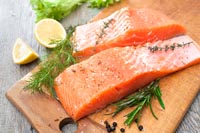Earth-friendly 2016 Diet Resolutions
/Too many of us have become Eco-Zombies... careless about the relationship between the health of the planet and the health of our own bodies and minds. From farm to fork, the way food is grown, processed, and distributed affects not only its quality and variety, but also impacts our health and the sustainability of Mother Earth. That's why a lot of people who are concerned about both the size of their waist and recent extremes in climate change are making Earth-friendly dietary choices.
A useful starting point for understanding the relationship between the environment and your health is "planetary boundaries," or tipping points in our planet's natural air, land, and water systems. Recently, a team of 28 internationally renowned scientists identified these boundaries and related changes in natural systems, such as air quality, biodiversity, and land use. Breaches to these boundaries and the altered environmental trajectories could result in rapid, irreversible changes that threaten the conditions under which humanity can thrive on Earth. According to the scientists, 3 of the 9 planetary boundaries have already been crossed: climate change, biodiversity, and the global nitrogen cycle. The direct and indirect effects are seen in loss of biodiversity; soil, air and water pollution; polar ice melting; rising sea levels; ocean acidification; species endangerment and alterations in habitats; and inadequate development of water and land resources to meet food and energy needs. These changes have inexorable effects on human health, including increases in food and waterborne disease; disease carried by wildlife (e.g., Lyme, West Nile, Ebola), malnutrition, and rising rates of cancer, heart disease, respiratory illness, and diabetes.
Our reliance on factory farms - a.k.a Concentrated Animal Feeding Operations or CAFOs-is a big contributor to environmental rifts and the degradation of health. Most meat, poultry, eggs and dairy sold in the U.S. come from CAFOs, a major driver of deforestation, habitat destruction, and climate change. To prevent disease and promote faster growth, these animals are given hormones and antibiotics. Overuse of antibiotics contributes to antibiotic resistance, a serious public health problem. Animal feed consists largely of subsidized Genetically Modified (GMO) grains grown with toxic pesticides and fertilizer, which end up in the water supply and on our produce.
"Grass-fed" beef may be more humane for animals but even the most humane farming practices wreak havoc on ecosystems. We have to feed billions of people, too many of whom consume too much of any kind of meat. Fish aren't off the hook, either. Overfishing has depleted many marine species and degraded marine ecosystems. Fish farms face similar problems to CFAOs. When it comes to reducing the negative impact food production on the planet, reducing seafood consumption is part of the equation.
Earth-friendly Diet Resolutions
Every day, you have three chances to choose a healthy, Earth-friendly diet consisting of more fruits, veggies, and legumes and no (or less and more carefully chosen) meat, dairy, eggs, and fish. In turn, you'll create a healthier future for Mother Earth.
Grow Your Food. Growing food helps save money, reduce the environmental cost of factory farming, and gives the whole family an "agri-education." Use organic soil, compost, and practice conservation-friendly watering to help your garden grow.
Eat Organic, Seasonally & Locally. Choose organic and in-season foods from local farms (Community Supported Agriculture-CSA) to support your local economy.
Go Meatless on Mondays. Just 1 day a week, try replacing meat-based recipes with savory vegetarian options.
Fish with Care. Like beef, farm raised fish also contain chemicals that affect our health and the environment. Choose locally caught, sustainably raised fish like tilapia, catfish or carp or "lower food chain" seafood including squid, clams or mussels.
Start a Farm-to-School Program. Talk with local public schools about partnering with CSA farms and serving vegetarian options to students.
Support GMO Labeling. The only way to know if a food has been genetically manipulated is for labels to indicate products are GMO-free. When it comes to your inbox, sign petitions for GMO labeling laws.
Image Attribution: HalfPoint/bigstockphoto.com
Resources



